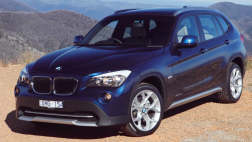The move, which is likely to cause a strong reaction among some new car manufacturers and importers, was announced this week by Australasian New Car Assessment Program chairman Lachlan McIntosh.
He was speaking at the launch of the new Subaru Impreza, the only Australian-tested car to score maximum five-star crash and four-star pedestrian ratings. McIntosh says the new standard is a logical step.
“We have always had the view (that it was a benefit) and have encouraged people to buy ESC,” McIntosh says. “We recognise the evidence is pretty clear that ESC has significant benefits in active safety."
“The US is mandating ESC and we think it is only reasonable anyone who has a car that they want to be rated as a five-star crashworthy car then it should also have ESC as part of it."
“From 2008 a condition of being five-star is that the car is fitted with ESC that would meet the US specification.”
McIntosh was dismissive of a recent comment from the FCAI chairman John Conomos that stability programs are not a critical safety issue worthy of government intervention.
“It is a critical issue. The evidence presented by Dr Stuart Newstead (Monash University's Accident Research Centre) at a conference a couple of weeks ago clearly shows that there are significant benefits in cars with ESC,” McIntosh says. “It's a feature you may never use in your life but it is so valuable that it is useful to have in every car ... and if you are going to be in a five-star car you must have that.”
The move to encourage manufacturers and importers to include stability control programs will be supported by a voluntary scheme to list the vehicle safety rating on a window sticker.
“The US has mandated window (display) safety ratings from September 1 and we have asked the Federal Government whether they would participate in such a campaign,” McIntosh says.
“We think there is value in doing that and NCAP itself is going to make those five-star labels available for manufacturers to put in their cars if they wish to.
“We think it is useful for the consumers to have that information but we don't think it needs regulation, rather hoping that manufacturers will do that as part of being good corporate citizens.”
Once the butt of industry anger and innuendo over its testing methods and the validity of the test results, McIntosh says ANCAP has gained far wider acceptance in recent years.
“Everybody has matured a bit since we started,” he says. “I think our relationships with safety bodies around the world are recognised by the total manufacturing sector now."
“In the US the major manufacturers have embraced the (crash-safety rating) concept and are using it as a marketing tool."
“In Australia we have been slower but we are making some progress and I think the Subaru release (Impreza) is a good example ... not just having a five-star crashworthy car but adding the four-star pedestrian rating and ESC thrown in. I think that is much bigger than even we realise.”
NCAP testing is not cheap with each full set of frontal offset, side and pole testing costing about $200,000. NCAP buys the cars it tests in frontal and side impact from a random selection offered by the manufacturer. Cars for the voluntary pole test, a necessity for the awarding of a five-star rating, are donated by the company.
One issue that does concern McIntosh is the practice of despecification, removing airbags and other safety systems from overseas models before they are sold in Australia.
“It is disappointing when we see cars being sold in Australia of lesser spec than similar cars sold elsewhere,” McIntosh says. “It is an argument we shouldn't be having.”


.jpg)


.jpg)

.jpg)
.jpg)





.jpg)

.jpg)











.jpg)


Comments